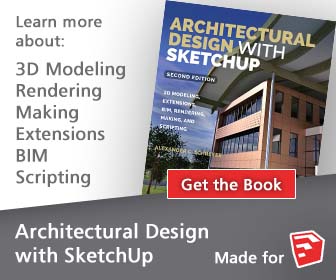Sketchup is a great tool for modeling timber frame designs in 3D, and you can’t beat that price! You can create simple drawings where timbers are represented as simple rectangular solids. This is often all you need to demonstrate to your clients what their frame will look like. But Sketchup is capable of doing much more. You can actually make a highly detailed model that includes all of your joinery design. You can then create accurate shop drawings for laying out timbers in your shop.
Here’s an example of a shop drawing that includes all the joinery. These are not hard to make if you lay the proper groundwork by creating a library of timbers and joinery.
Intrigued? Read on.
Sketchup has a built-in ruby interpreter which allows you to create custom extensions to the program. I’ve created a suite of these extensions specifically for timber framers. I call them the TF Rubies, and I’m making them available for free (all I ask is that you not sue me if something goes wrong :-)
If you’re not already using it, download Sketchup. If you’re not familiar with how it works, there a lot of resources available on the web for that. There’s even a Sketchup for Dummies book. The Sketchup Community Forums are also a great place to ask questions and learn more. Once you feel comfortable with the basics of Sketchup, continue on…
Here’s the Sketchup model of a partial frame that includes the post from the previous example. Go ahead and download it, and open it with Sketchup. Grab the post and move it away from the frame. Look carefully, and you’ll see that all of the tenons are included in the model, and that each tenon is part of a parent timber. Note that none of the mortises are modeled, however. The mortises are created automatically by the TF Rubies when you create shop drawings. The mortise will always look exactly like the tenon, only inside out. And the mortise location will be determined exactly from the location of the tenon. So if you rearrange the model, the tenons will move with the timbers, and new mortises are created just by re-creating the shop drawings.
The key to making all of this work is to create a library of timbers that you use frequently. I’ll share mine with you, but they reflect my own style of frame and joinery design. You’ll want to build your own libraries that reflect your own style, using mine as an example.



